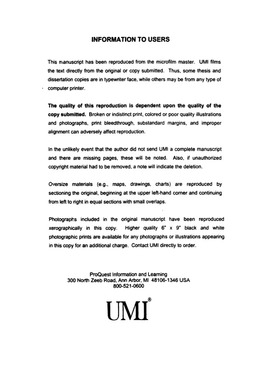| dc.contributor.advisor | Roe, Bruce A., | en_US |
| dc.contributor.author | Zhu, Hua. | en_US |
| dc.date.accessioned | 2013-08-16T12:18:20Z | |
| dc.date.available | 2013-08-16T12:18:20Z | |
| dc.date.issued | 2001 | en_US |
| dc.identifier.uri | https://hdl.handle.net/11244/348 | |
| dc.description.abstract | In the group of genes that were detected from both cDNA libraries, the highest three of the top ten highly expressed genes were clock-controlled genes (ccgs). That these ccgs are so highly expressed in Neurospora implies that circadian regulation of a gene expression may be more pervasive than previously anticipated. The identity of the previously unknown ccg-4 gene as a N. crassa homolog of a Sordaria macrospora pheromone precursor may indicate that the sexual cycle and meiosis also may be clock-controlled. Sequence comparison was performed between the N. crassa genomic DNA sequence and the cDNA sequences of the identified clock-controlled genes. During this work, several instances of alternative splicing and alternative polyadenylation sites were observed for the fungal cDNAs. In addition, through these studies, 4 new clock-controlled genes which showed circadian expression were detected. (Abstract shortened by UMI.) | en_US |
| dc.description.abstract | A total of 10871 high quality ESTs obtained by end sequencing the morning library (NM) and 9148 high quality ESTs were generated from the evening cDNA library (NE) after removal of poor quality sequences, sequences with short inserts (< 100 bp), vector sequences, wrong end sequences (i.e. those with no poly T on 3' end), and contaminating E. coli , mitochondrial, and ribosomal RNA sequences. | en_US |
| dc.description.abstract | The ascomycete fungus Neurospora crassa is an ideal model system to study circadian rhythms, the widespread biological rhythms that are observed in a variety of organisms from cyanobacteria to human. Circadian rhythms are generated and controlled by an endogenous biological clock that has an innate, approximately daily periodicity. To study this phenomenon, time-of-day-specific cDNA libraries were constructed with the N. crassa frq+ strain 30--7 (bd; A) and the long period mutant 695--425 (bd; frq7 ; A), resulting in a morning cDNA library (NM) equivalent to a clock time of one hour CT1 and an evening cDNA library (NE) equivalent to a clock time of 13 hours CT13, respectively. The sequences of both ends of the cDNAs from these two libraries represent their respective 3' ESTs and 5' ESTs. | en_US |
| dc.format.extent | 2 v. (xvi, 441 leaves) : | en_US |
| dc.subject | Circadian rhythms. | en_US |
| dc.subject | DNA replication. | en_US |
| dc.subject | Neurospora crassa. | en_US |
| dc.subject | Biology, Molecular. | en_US |
| dc.subject | Biological rhythms in plants. | en_US |
| dc.title | Expression profiles and the identification of the clock-controlled genes in two time-of-day-specific cDNA libraries of Neurospora crassa. | en_US |
| dc.type | Thesis | en_US |
| dc.thesis.degree | Ph.D. | en_US |
| dc.thesis.degreeDiscipline | Department of Chemistry and Biochemistry | en_US |
| dc.note | Major Professor: Bruce A. Roe. | en_US |
| dc.note | Source: Dissertation Abstracts International, Volume: 62-05, Section: B, page: 2196. | en_US |
| ou.identifier | (UMI)AAI3014527 | en_US |
| ou.group | College of Arts and Sciences::Department of Chemistry and Biochemistry | |
